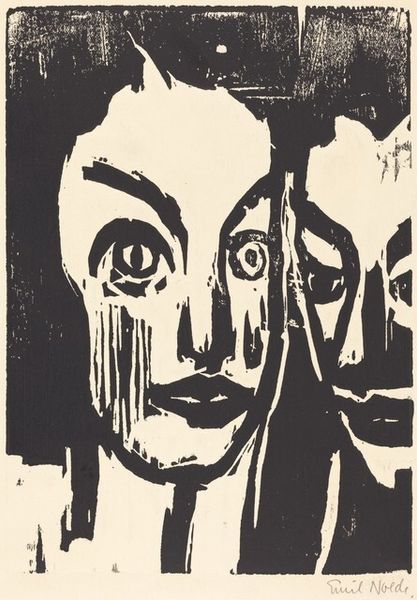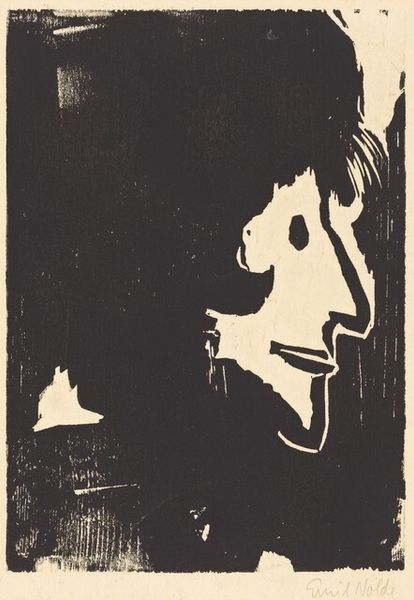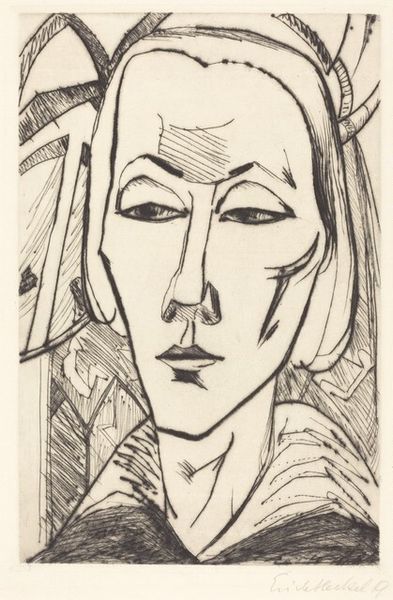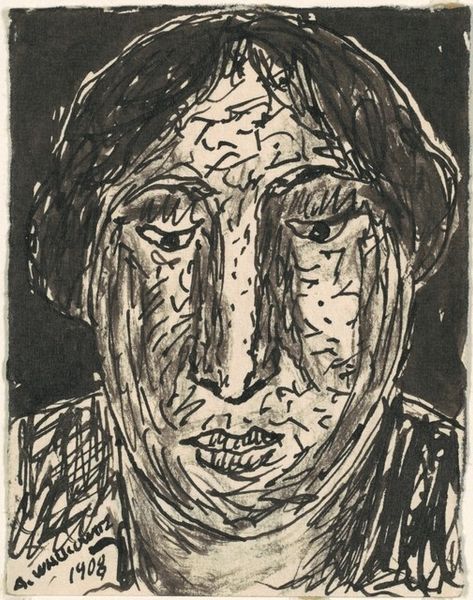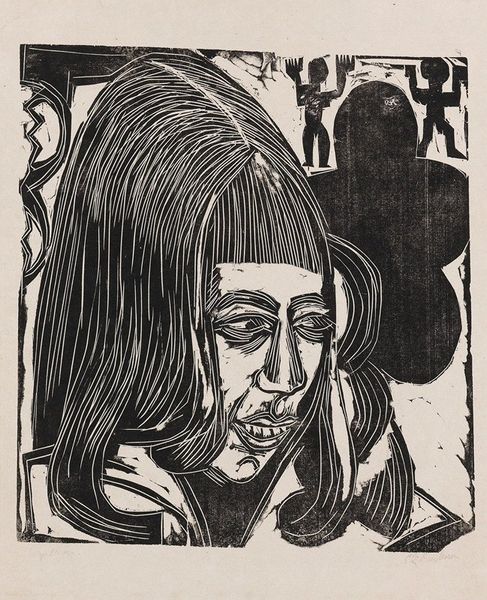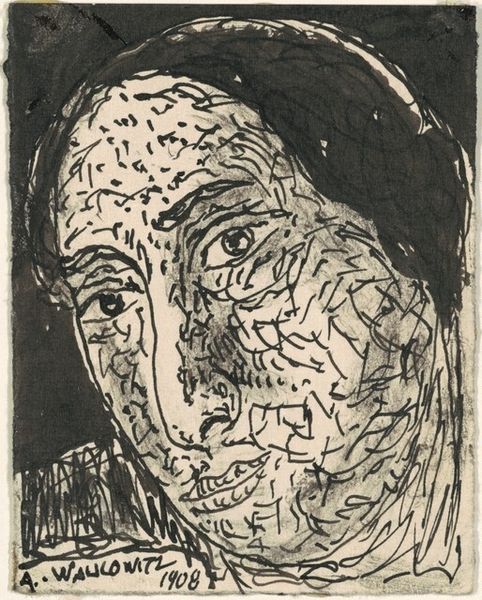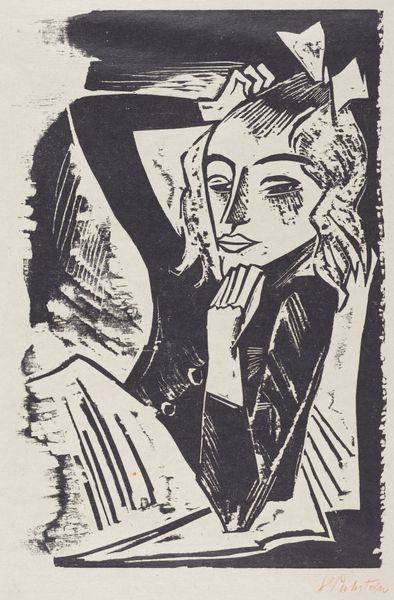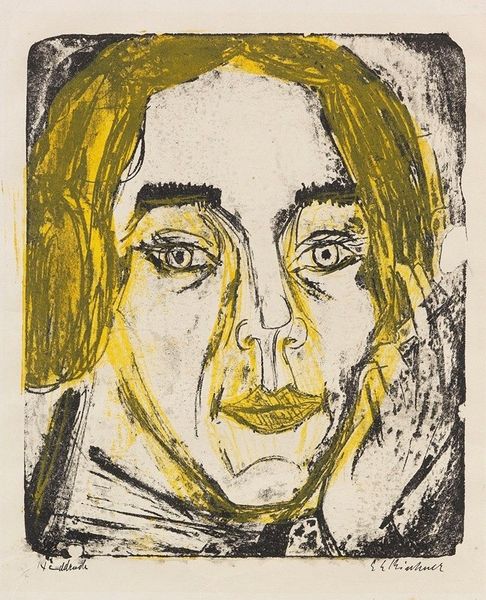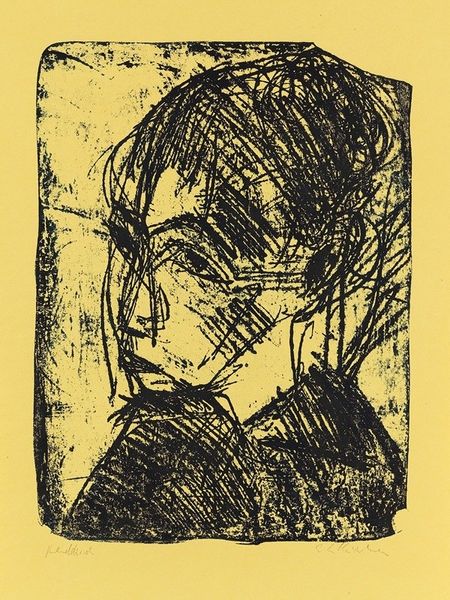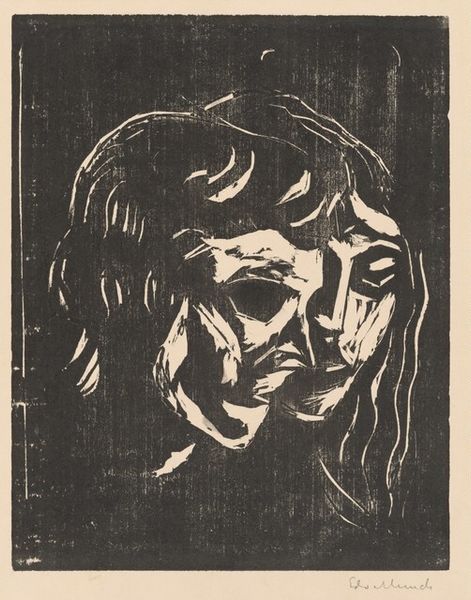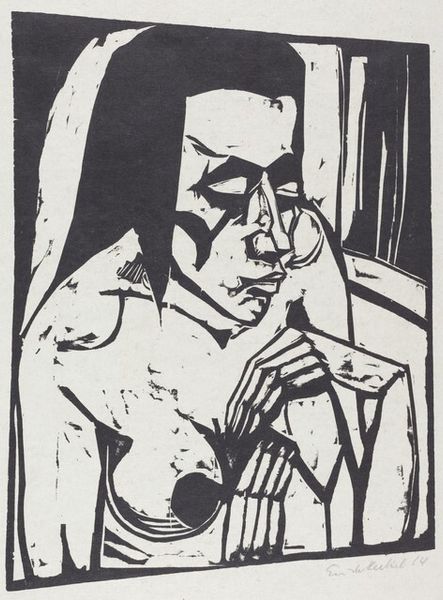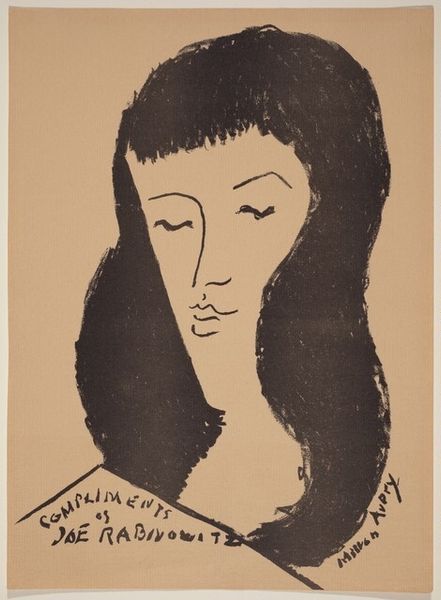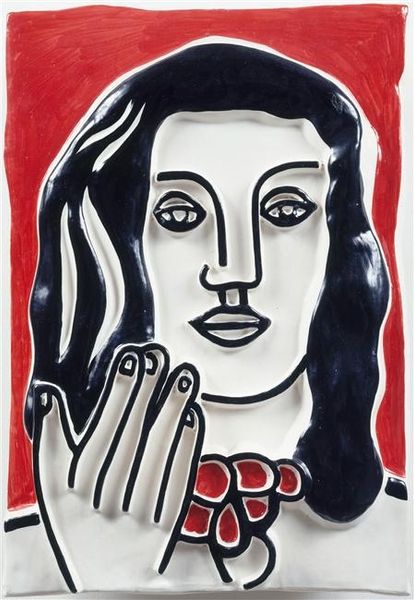
print, woodcut
#
portrait
# print
#
german-expressionism
#
expressionism
#
woodcut
Copyright: National Gallery of Art: CC0 1.0
Editor: So this is "Frau D.S." a 1917 woodcut by Emil Nolde. The stark black and white and the rough cuts really create a striking image. I'm curious, what do you see in this work, considering the material process? Curator: It's crucial to understand Nolde's deliberate engagement with the woodcut medium here. The crude, almost violent carving emphasizes the physical labor involved. This was during a time of upheaval; do you think this visible struggle in its making reflected the wider societal anxieties of World War I Germany? Editor: That’s a very interesting point, making the physical process somehow a stand-in for broader concerns. The lack of refinement seems intentional then, reflecting a sort of brutal honesty. Curator: Precisely! The readily available nature and affordability of printmaking also democratized art, pushing against established artistic hierarchies. It made it far easier for work to be distributed to the masses at this point in time. Editor: So, it wasn't just about expressing emotion but also about who had access to the artwork and how it was circulated. The raw physicality becomes part of the message. Curator: Exactly. The material speaks volumes about the intended audience, the means of production and consumption, and the role of the artist within a rapidly changing society. Don't you agree this offers an expanded notion of what 'art' could be at that moment? Editor: Definitely. It shows that focusing on the materials and their social context can reveal hidden depths in even seemingly simple artworks. It also points towards ideas like authenticity and labour in the age of industrial reproducibility that feel relevant today.
Comments
No comments
Be the first to comment and join the conversation on the ultimate creative platform.
